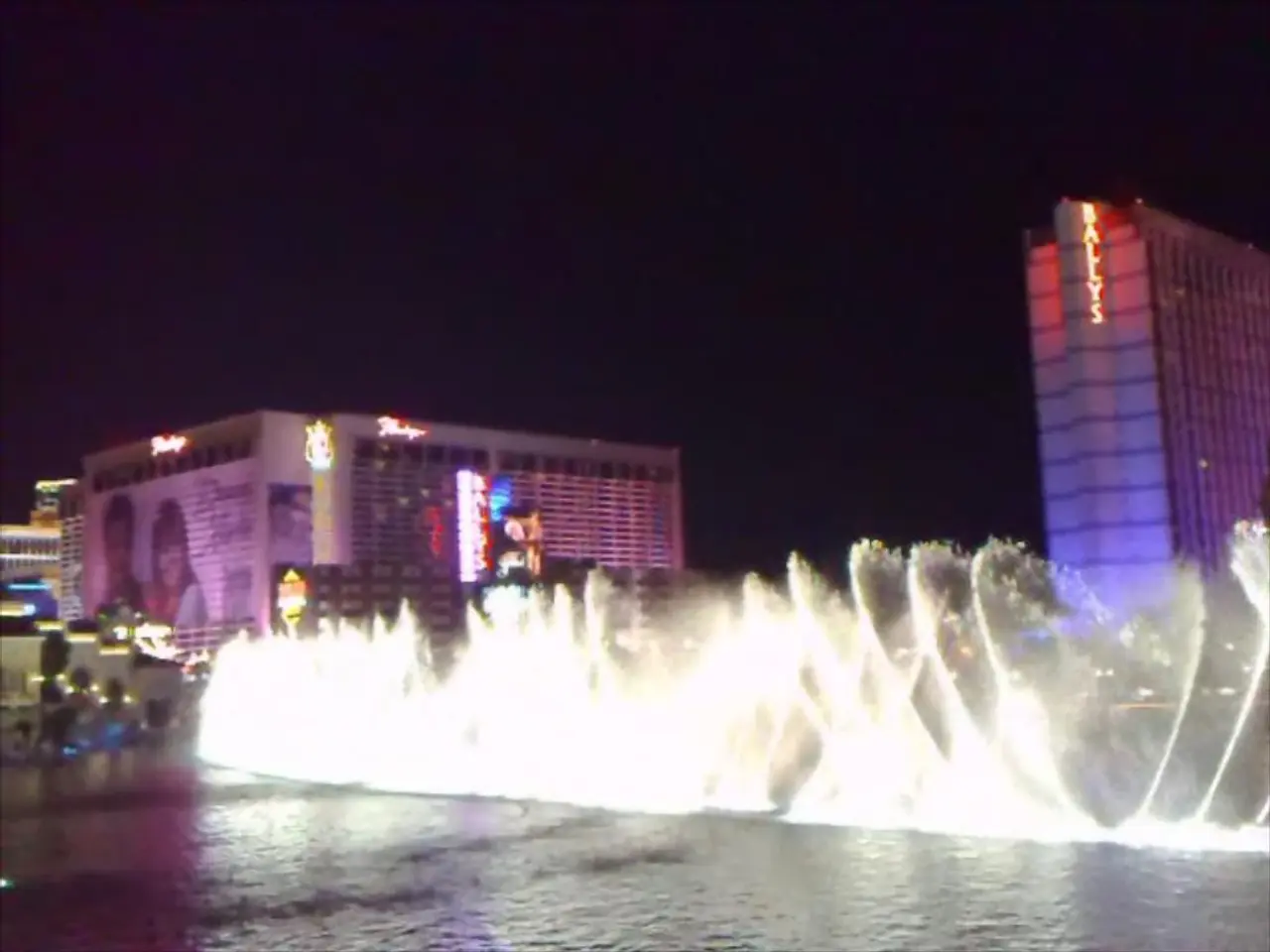Potential Water Shortage Faces Las Vegas
In the heart of the Mojave Desert, where water is a precious resource, Las Vegas stands as a testament to water conservation and sustainable practices. Serving around 20 million people across multiple states, the city relies heavily on Lake Mead, which provides up to 90% of its water supply [1].
The Colorado River feeds Lake Mead, and the water travels a long journey through treatment facilities before reaching Las Vegas Valley's "straws" [8]. The city consumes an average of 219 gallons of water per person per day [9]. However, significant efforts have been made to reduce water consumption, with the community using 27 billion gallons less water in 2018 than it did just after the Millennium [10].
Las Vegas casinos, particularly major operators like MGM Resorts and Sands, have taken the lead in implementing water conservation and waste management practices as part of their environmental stewardship efforts. MGM Resorts, for instance, recently launched a hybrid cooling tower at the Bellagio casino, expected to save 18 million gallons of water annually by reducing evaporative water use [2]. Sands also emphasizes water efficiency by upgrading fixtures and systems, enacting water-conservation policies, and encouraging sensible water use across their properties [5].
One notable initiative is the implementation of advanced water-saving technologies. Among major casinos, water recycling rates are often said to be as high as 40 percent [7]. For example, the Bellagio fountains, while requiring 20 million gallons of water, use filtered and reused water, just as it does with all fountains on the Strip [1].
Beyond individual casino initiatives, Las Vegas has comprehensive water conservation policies city-wide. These include turf removal programs that have replaced over 200 million square feet of grass with drought-tolerant landscaping, saving billions of gallons of water annually [3]. New building codes mandate water-efficient fixtures and landscape controls, and tiered water pricing incentivizes reduced consumption [3]. These policies apply to commercial developments and businesses, including casinos.
The Southern Nevada Water Authority (SNWA) supports these efforts and is working on infrastructure projects like a major water transmission pipeline to enhance supply reliability [3]. However, the ongoing drought and the impact of lower Colorado River flows have made water scarcity a concern. Southern Nevada has reduced its water use from Lake Mead by 36% compared to two decades ago through conservation [4].
Despite these gains, federal government officials are projecting that Lake Mead's water levels will fall below 1,075 feet in 2021, which could result in less water for Nevada, California, and Arizona [6]. In response, the city of Las Vegas has restrictions on new sod and yard watering [11].
In addition to water conservation, casino operators have sustainability commitments that include waste reduction and recycling programs. Sands' environmental initiatives suggest a holistic approach to resource conservation, implying waste management as part of their sustainability framework [5]. However, specific detailed waste practices for casinos were less prominent in the search results.
In conclusion, Las Vegas casinos are at the forefront of water conservation and sustainable practices, engaging in advanced water-saving technologies, participating in strict regional conservation policies, and adopting sustainable facility management practices to reduce water consumption and waste. These efforts reflect the growing importance of environmental responsibility in this water-scarce region [2][3][5].
References:
- Nevada Water Facts
- MGM Resorts International
- Southern Nevada Water Authority
- Bureau of Reclamation
- Sands Corporation
- U.S. Bureau of Reclamation
- Las Vegas Review-Journal
- Las Vegas Water District
- Clark County Water Reclamation District
- Nevada Department of Conservation and Natural Resources
- City of Las Vegas
- The casino operation in Las Vegas, such as MGM Resorts and Sands, have embraced environmental stewardship by implementing water conservation practices, like the installation of hybrid cooling towers and water recycling systems, to reduce water consumption and waste.
- Beyond casino-specific initiatives, the city of Las Vegas has undertaken comprehensive water conservation policies, including turf removal programs, mandates for water-efficient fixtures, and tiered water pricing, to encourage reduced consumption across the city, including in the casino industry.
- The impact of climate change and environmental science on water scarcity in the region is not overlooked, as the city of Las Vegas has also implemented restrictions on new sod and yard watering in response to federal projections of reduced water levels in Lake Mead.




